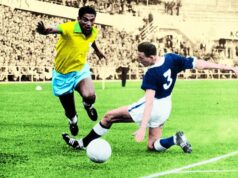Whether you’re a pro, or a newbie athlete just joining the soccer ranks, dealing with an injury can be a lengthy, challenging process, and not just from the physical point of view. Yes, you’re bound to dedicate most of your active time to rehabilitation, mobility work and slow-paced routines, but the down time is what makes it so agonizing to most soccer players.
If you are currently struggling to recover, there’s a good chance you are doing so with medical guidance (hopefully), but in addition to all the mandatory elements of recovery, you can use several strategies to cope better with the process and perhaps even speed it up as much as possible without aggravating your condition.

Diagnosis and supervision
First and foremost, no matter how soccer-savvy you are, you cannot underestimate the importance of a thorough physical checkup immediately before every game, and after your injury. It doesn’t matter if it’s something as simple (although equally agitating) as an ankle sprain, or something as severe as a fracture, you must get advice from your doctor on what examination you need and how to proceed with the injury, with proper supervision from your coaches and your medical team.
Sometimes, benign muscle soreness can be a torn muscle waiting to happen, or the tightness in your ankle can be a signal of impending tendonitis. If it’s possible to use this current condition to prevent a more debilitating injury, use it to your advantage and count your blessings. If you’re already facing months off the field and demanding rehabilitation work, then let it be a learning experience to listen to your body in the future even better for early signs of any potential injury.
Rest and recuperate
Although probably the last thing on your mind, rest is the key to recovery. Consult your doctors and your coach on the best positions for your injury to heal – perhaps you could elevate your leg a little with a pillow, or maybe lying on your stomach in case of a back injury would be best.
Rest, however, doesn’t mean just bed-rest, but also plenty of quality, uninterrupted sleep every night during your recovery and active rehabilitation during the day. At night, your body will repair most of the damage, and so it is of utmost importance to stick to a sleeping schedule that will repair everything all the way to the cellular level.
Slow and steady wins the race
The concept of full bed-rest is slowly coming to an end – or at least top physicians are doing their best to end it, to the benefit of soccer players all over the globe and in an attempt to let the body heal more naturally, without casts if possible, and with as much guided and supervised activity as possible.
Unless your injury is leg or hip-related and completely immobilized, your doctor will most likely tailor an exercise scheme to keep your muscles engaged and strong, to maintain your endurance, even through mild exercises such as walking. In that case, using comfortable sneakers like Nike will help you overcome the pain and regain your mobility in time.
Let cold heal you
A vast majority of injuries that are soccer-related include some form of inflammation, whether it’s in your muscles, connective tissue or joints. And precisely due to their inflammatory nature, these injuries will most often benefit from using cold packs to help your body heal faster and more efficiently, simultaneously reducing pain and swelling.
But instead of dipping yourself into a tub filled with cold water or using ice packs, combining compression with cold can work wonders for inflamed muscles, tendons and ligaments. These compresses, such as ACE or Cryo-Max are handy both for minor issues such as strains, but can also come in handy in post-surgical recovery.
It boils down to ensuring that your body has all the preconditions to get better in as little time as possible, and with no risk to your wellbeing. With the right help from your coaches and doctors, you can find yourself back on your feet, ready to conquer another game!






